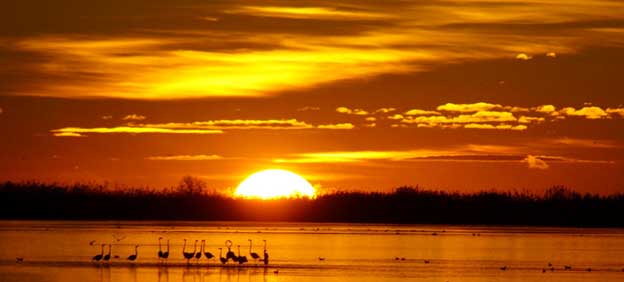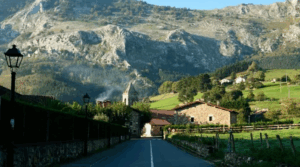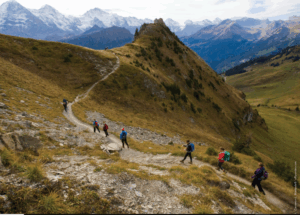Bridging the gaps between Climate Action and Biodiversity Preservation

By Simone Galimberti —–
Kathmandu (IPS) – With the climate negotiations getting more and more intense in the light of ensuring meaningful achievements in the upcoming COP- 26 summit in Edinburgh, an event that is key to move forward the pathway towards a net zero future started in Paris, this year World Environment Day on June 5 assumes an even more emblematic meaning.
While the ongoing climate negotiations have finally found relevance not only among policymakers but also among the masses thanks to new level of civic mobilization that is instrumental in creating a new global consciousness about the real perils of climate change, we are at risk of overlooking an equal important issue that is connected to the core of the climate challenge.
Fortunately, the World Environment Day 2021 could not choose a better topic to bring remedy here, finally highlighting the linkages between the dangers of a world economy driven by carbon fossils and the repercussions that emissions stemming from them and other types of human activities are having on the planet’s biodiversity.
To stress the new sense of urgency, that with “Ecosystem Restoration” as theme, World Environment Day is launching the UN Decade on Ecosystem Restoration that will be focusing on restoring, supporting and enhancing the planet’s different habitats in which life, of different forms and species, should supposedly abound and thrive rather than being at risk of extinction.
Restoring ecosystems should be therefore seen as a rallying cry, a call for action to ensure that biodiversity claims its due visibility in the broader call for a sustainable future under the banner of the Agenda 2030 and the Sustainable Development Goals (SDGs).
Policy makers are right now under pressure to come up with bolder and stronger emission targets and it is encouraging how a global leadership movement is emerging to tackle climate change.
If the Petersberg Climate Dialogue has now become a traditional forum, many other leaders from parts of the world’s previously less engaged on climate action, are stepping up.
Just days ago, the P4G Seoul Summit 2021 was held showing a new commitment from the Government of South Korea to become a trailblazer in matter of climate actions.
Yet, with so much discussions on climate change going on, the hope is not just that global leaders will muster the foresight and determination to truly lay out a long term “build forward better” vision of their countries but will also be able to bridge the gap that separate discussions on climate change from those focused on the planet’s endangered biodiversity.
Worryingly enough, the public opinion and consequentially the world leaders did not yet broaden their focus yet from the COP 26 discussions, enlarging their horizons to include another strategic summit that will be held from 11 to 24 of October in Kunming, formally the 15th meeting of the Conference of the Parties to the Convention on Biological Diversity.
Unfortunately, the global governance mechanisms do not facilitate cross cutting thematic linkages and therefore so far Edinburgh got much higher levels of attention than Kunming.
Yet, the same consensus existing now that new ambitious carbon emissions targets are essential for our survival, should also imply an acknowledgement on the need to elevate biodiversity to the same levels of attention and urgency that climate now musters.
The ninth Trondheim Conference on Biodiversity held in 2019 could not make a better case for such recognition.
“Scientists warn that we are heading for fundamental change in Earth systems as a result of changes in the biosphere” while stressing that “there are close links between the biodiversity and climate agendas, and it is well understood that a temperature rise of 1.5˚C will have impacts on biodiversity and ecosystem function and services”.
With such high stakes at play it is baffling how we tend to neglect the importance of the Aichi Biodiversity Targets that were endorsed during the Tenth meeting of the Conference to the Parties to the Convention on Biological Diversity held Nagoya, Japan, 18-29 October 2010
Kunming is even more important because it will adopt a post 2020 Global Biodiversity Framework that will be considered as “a steppingstone towards the 2050 vision of living in harmony with nature, where by 2050, biodiversity is valued, conserved, restored and widely used, maintaining ecosystem services sustaining a healthy planet and delivering benefits essentials for all people”.
The vision of a “2050 living in harmony” was agreed in Nagoya but it needs an urgent rebooting and this is what Kunming should deliver, a new ambitious agenda that is able to be mainstreamed across the policy spectrum.
Indeed, mainstreaming is one of the biggest issues being discussed in the preparations to the Kunming summit.
In the regional consultation workshop on the post 2020 Global Biodiversity Framework for Asia and Pacific, participants highlighted the missing linkages between work in the field of biodiversity, climate change and the overall SDGs framework.
“With the adoption of the 2030 Agenda for Sustainable Development, there is a need to consider how future biodiversity targets will relate to or compliment the Sustainable Development Goals. Similarly, the need to link future biodiversity targets to the climate change agenda was also noted”, the report of the workshop explains.
Fortunately, there are some good news for us.
In the last official review of the Aichi Biodiversity Targets, Protected Planet Report, there have been good progress in the extension of lands and oceans being protected but “a third of key biodiversity areas lack any coverage, and less than 8% of land is both protected and connected”.
In addition, the overall “quality” of such protected areas remains a question that must be addressed urgently, a concern well highlighted by Naville Ash with UNEP:
An interesting though much unexplored linkage between efforts on biodiversity and climate action is the “importance of nature-based solutions for climate change mitigation and adaptation” and this is a huge area open for a global brainstorming and ideation process, reimagining different, more biodiverse and sustainable living settings.
These days the third session of the Subsidiary Body on Implementation (SBI-3) of the Convention on Biological Diversity is taking place virtually in order to make the next biodiversity framework more effective, more streamlined and better relevant to the discussions taking in place around climate change.
We need to formulate a new narrative about biodiversity because at the end of the day it is a different side of the same coin and policy makers must be educated on strong linkages between climate change and biodiversity loss.
It is not surprising that resources needed for such “coupling” approach are going to be huge. According to the State of Finance for Nature report, released on the 27th of May, making a much-needed contribution in linking the two areas of biodiversity and climate, a total investment in nature of USD 8.1 trillion is required between now and 2050.
As you can see this year World Environment Day is not like any previous one. There are two questions that this day should help reflect over: Will the celebrations ensure that the new UN Decade on Ecosystem Restoration is going to be aligned with climate change discussions and Agenda 2030?
And will it help create a new sense of awareness and urgency that tackling climate change requires the protection and expansion of our wealth expressed in biodiversity and, at the same time, gigantic resources?
Answering these two questions in the right way will determine the odds human beings will have to truly thrive in the decades ahead.
The Author, is the Co-Founder of ENGAGE, a not for profit in Nepal. He writes on volunteerism, social inclusion, youth development and regional integration as an engine to improve people’s lives. He can be reached at simone_engage@yahoo.com
4 June , 2021
Image : Sunrise in the Ebro Delta in Spain’s Catalonia region. The World Meteorological Organization (WMO) said last month there was a 40 per cent chance of the watershed global warming mark being met during the time frame, and these odds are increasing with time. Credit: WMO/Agusti Descarrega Sola














